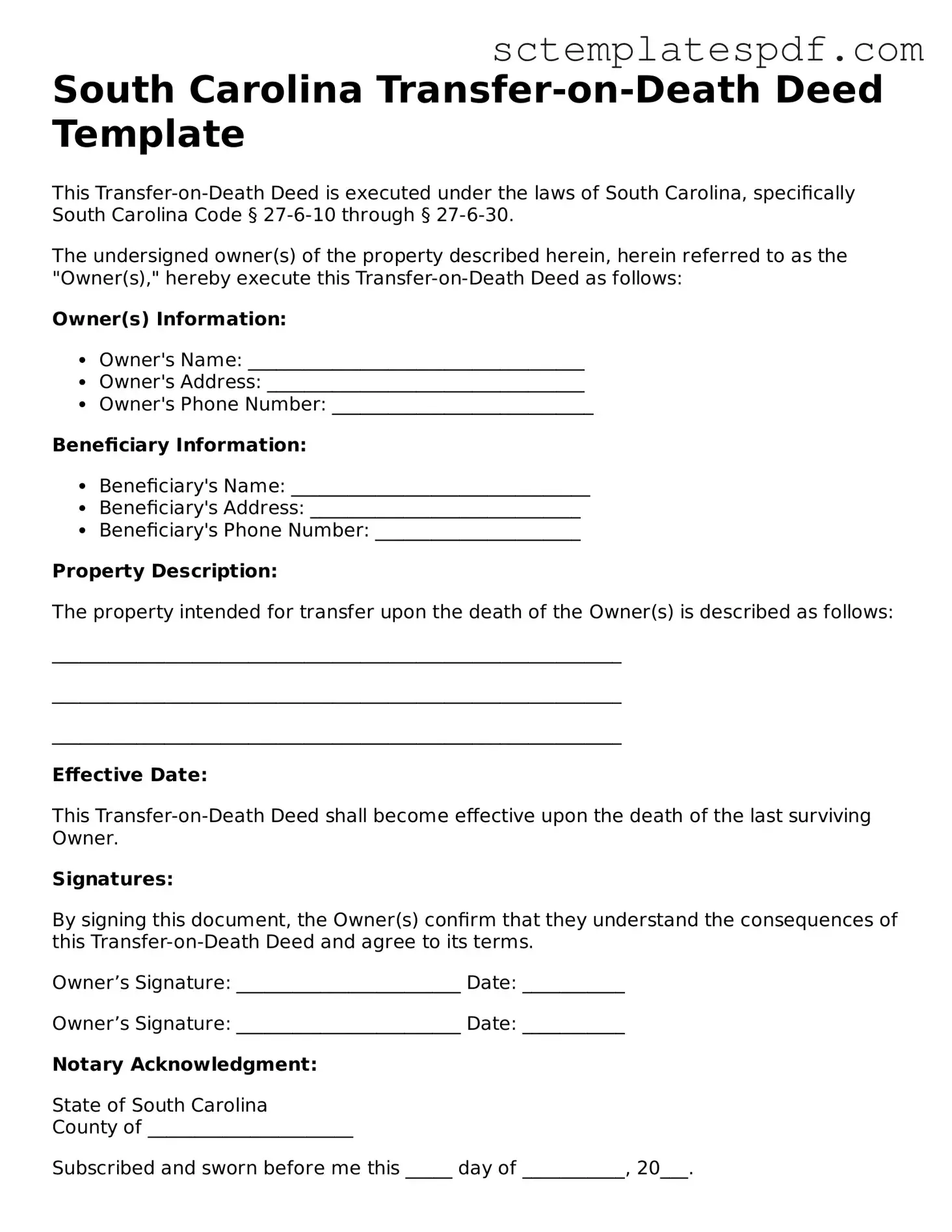Valid South Carolina Transfer-on-Death Deed Document
The South Carolina Transfer-on-Death Deed form allows property owners to transfer their real estate to designated beneficiaries upon their death, bypassing the probate process. This straightforward tool ensures that your property goes directly to your loved ones without unnecessary delays or complications. If you're considering this option, start by filling out the form below.
Click the button below to get started!
Fill Out Your Transfer-on-Death Deed
